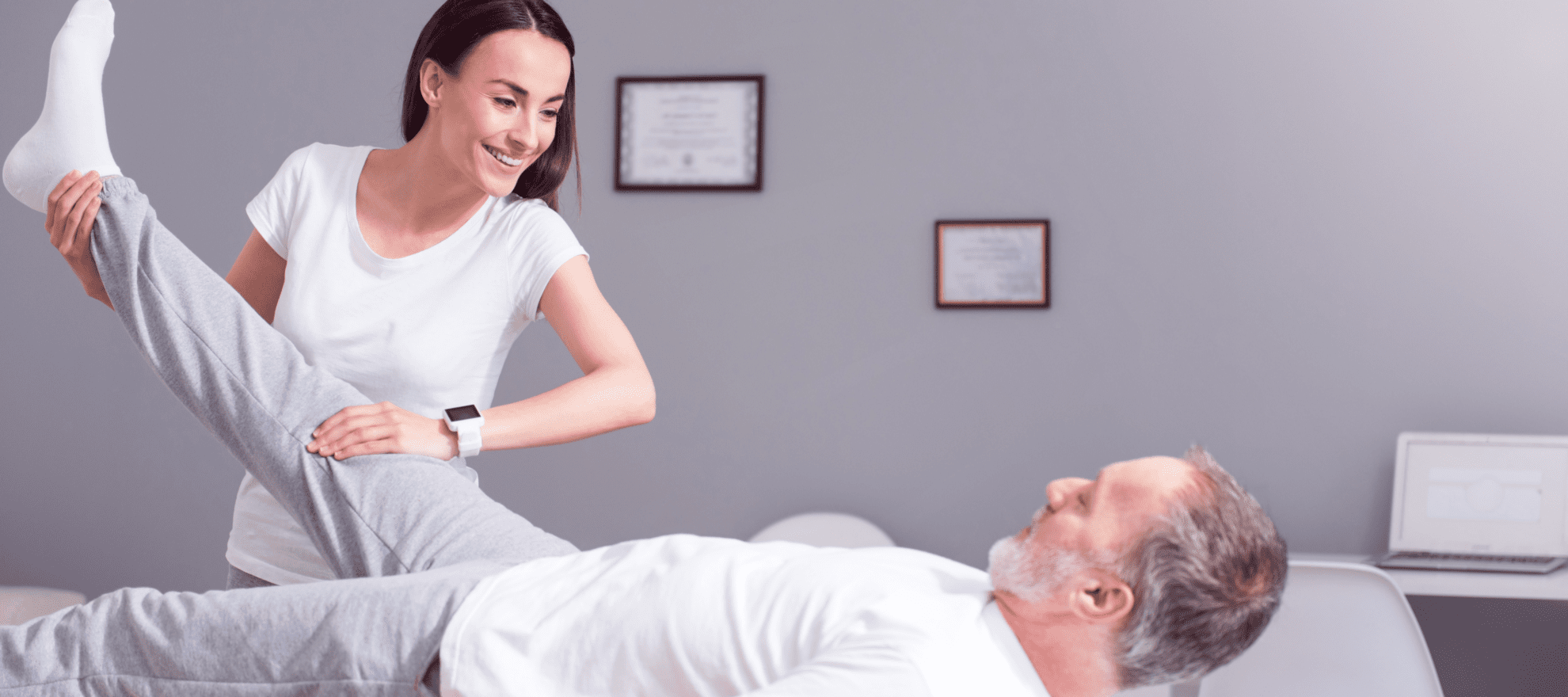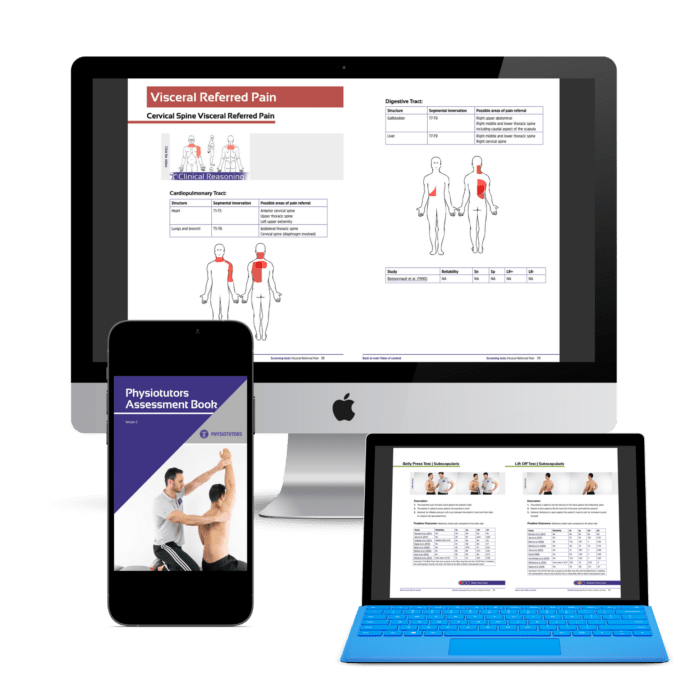Shoulder Active Range of Motion | AROM Assessment

Shoulder Active Range of Motion | AROM Assessment
During AROM you are assessing, how many degrees of freedom the patient has in the shoulder complex. Additionally, you are looking for compensation and movement quality. If your patient is in a lot of pain or comes to your practice directly post-op, you rather want to choose for the supine position instead of sitting. So what kind of pathologies could we use AROM assessment in the shoulder for? Let’s look at the most prominent ones:
1) Frozen Shoulder: In Frozen Shoulder you’d expect a severe decrease in AROM as well as PROM (tomorrow) with minimal pain, especially in external rotation in 0° of abduction and elevation.
2) Rotator cuff pathology: In this case, you might for example observe a painful arc between 60-120° of abduction, as well as scapular dyskinesia – although evidence for scapula dyskinesia and its contribution to shoulder pain is conflicting.
During active range of motion assessment, you’re going to evaluate the following movements: First, there is elevation through abduction. Ask your patient to place the arms in the anatomic position, meaning the palms face forward with the thumbs pointing towards the side. Then ask your patient to slowly abduct the arms as far as possible. Ask your patient to perform the same movement, but now you’re looking at him from the back.
To evaluate the movement, make use of the scapulohumeral rhythm. You’re going to examine the movements of the humerus, scapula, and clavicle. The second movement is elevation through forward flexion. Ask your patient to stand upright and the thumbs point forward and then your patient is going to slowly forward flex both arms.
For extension, ask your patient to stand upright and then instruct him to bring the arms as far back as possible. Make sure that the movement is in the shoulder and that the patient does not compensate from the spine by leaning forward or by scapular retraction.
For lateral or external rotation, ask your patient to flex the elbow to 90° and have the upper arms rest against the thorax. The patient is then asked to bring the wrist outward as far as possible without abducting the arm. This movement should be performed carefully in patients who suffered shoulder dislocations.
For medial or internal rotation, there are two ways to assess this movement. First, there is the hitchhiking thumb. Ask your patient to extend the thumb and reach as far up the back as possible with it. The spinous processes T5 and T10 represent normal internal rotation degrees. The second way to assess medial or internal rotation is to ask your patient to abduct the arms to 90° and then perform internal rotation.
Next up is adduction. Instruct your patient to bring the arms as far as possible in front of the body. Next up is horizontal adduction or crossed flexion. Ask your patient to abduct the arms to 90° and then bring the arms as far as possible in front of the body.
For scapular protraction, ask your patient to bring the shoulders as far as possible together anteriorly. For scapular retraction, ask your patient to squeeze the shoulder blades together and thus perform retraction.
For shoulder elevation, instruct your patient to shrug the shoulders. For shoulder depression, instruct your patient to bring the shoulders towards the floor as far as possible.
Read the following post in order to learn how to assess for passive range of motion in the shoulder.
21 OF THE MOST USEFUL ORTHOPAEDIC TESTS IN CLINICAL PRACTICE

References
–
BUY THE FULL PHYSIOTUTORS ASSESSMENT BOOK
- 600+ Pages e-Book
- Interactive Content (Direct Video Demonstration, PubMed articles)
- Statistical Values for all Special Tests from the latest research
- Clinical Value Recommendation
- Detailed descriptions & searchable
- Currently on Version 6.0 – Free lifetime updates
- Available in 🇬🇧 🇩🇪 🇫🇷 🇪🇸 🇮🇹 🇵🇹 🇹🇷
- And much more!
ALL ORTHOPEDIC TESTS IN ONE PLACE


What customers have to say about the Assessment E-Book
- Vince199225/04/20The Assessment E-Book This book helped me in my studying for my exam and in assessing my first patients. Awesome! Also for beginners!Simon Pagitz06/04/20The Assessment E-Book It’s an amazing Compilation! Congrats to all the work you have put in there. You’ll propably find all the test’s you’ve been looking for with propper explaination and source to doublecheck for you self. definetly a must have for every student, but it will also help an experienced practioner. Im looking forward to the lifelong updates on the topics.
Great work, guys - Jordi Burrut27/10/19The Assessment E-Book A must-have for all physiotherapists, osteopaths and manual therapists. The authors conducted an extensive research on assessment tests in manual therapy. I find it very easy to read. The more I read the more I learn. Thank you!Josh07/07/19The Assessment E-Book This book is great! It is very structured and detailed. It works extremely well on my Macbook and iPad.
- Polo_soa15/02/19The Assessment E-Book The best way to spend 80euros. Totally worth it. The amount of work you put behind this must have been absolutely huge. Every physical or physiotherapist should own it.
Congrats guys you’ve done an incredible job.
I’ve learnd a lot of new things and my approach to therapy in general have totally changed.
In one word: amazing. Keep going guys ! Best wishes from france.


